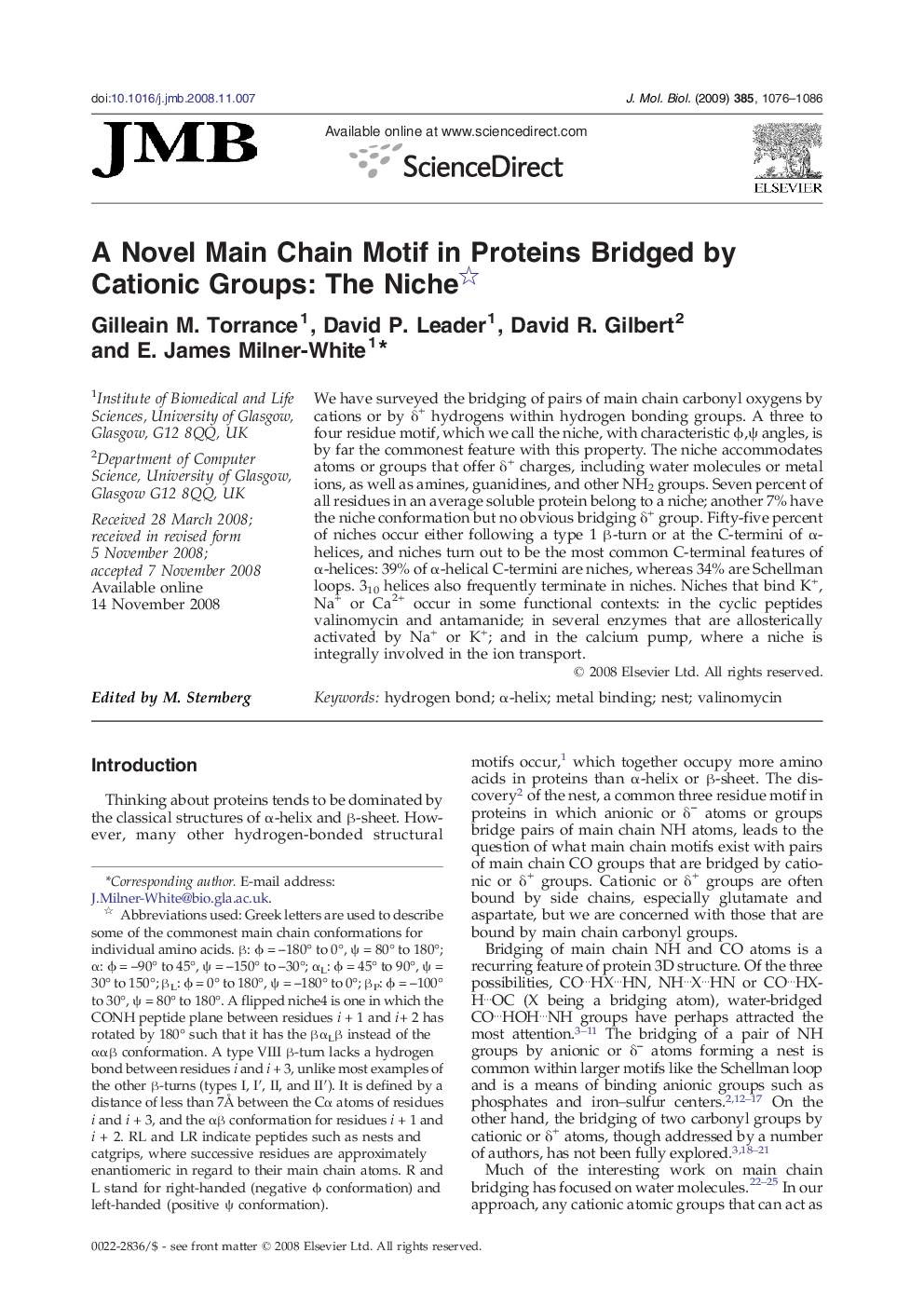| Article ID | Journal | Published Year | Pages | File Type |
|---|---|---|---|---|
| 2187105 | Journal of Molecular Biology | 2009 | 11 Pages |
We have surveyed the bridging of pairs of main chain carbonyl oxygens by cations or by δ+ hydrogens within hydrogen bonding groups. A three to four residue motif, which we call the niche, with characteristic ϕ,ψ angles, is by far the commonest feature with this property. The niche accommodates atoms or groups that offer δ+ charges, including water molecules or metal ions, as well as amines, guanidines, and other NH2 groups. Seven percent of all residues in an average soluble protein belong to a niche; another 7% have the niche conformation but no obvious bridging δ+ group. Fifty-five percent of niches occur either following a type 1 β-turn or at the C-termini of α-helices, and niches turn out to be the most common C-terminal features of α-helices: 39% of α-helical C-termini are niches, whereas 34% are Schellman loops. 310 helices also frequently terminate in niches. Niches that bind K+, Na+ or Ca2+ occur in some functional contexts: in the cyclic peptides valinomycin and antamanide; in several enzymes that are allosterically activated by Na+ or K+; and in the calcium pump, where a niche is integrally involved in the ion transport.
